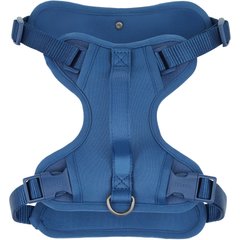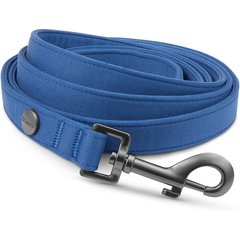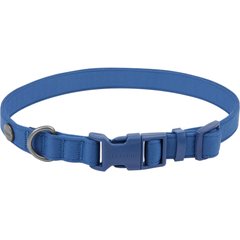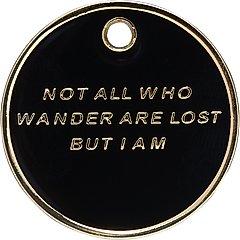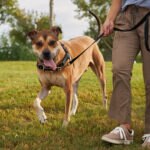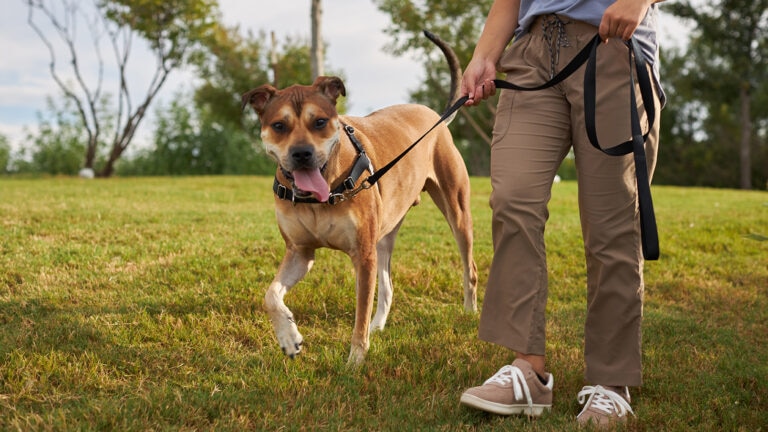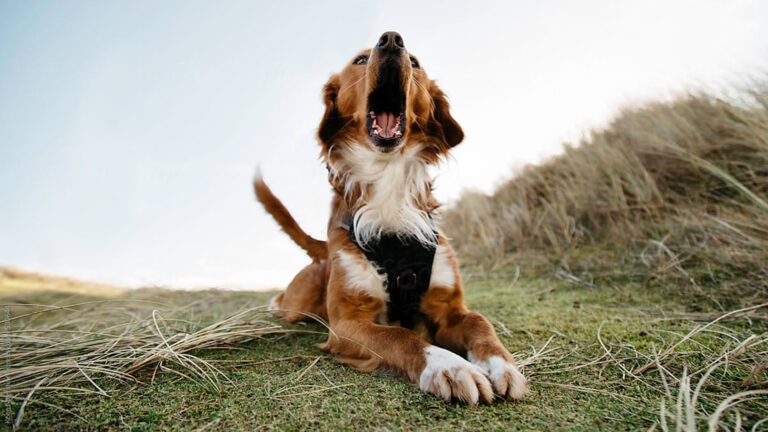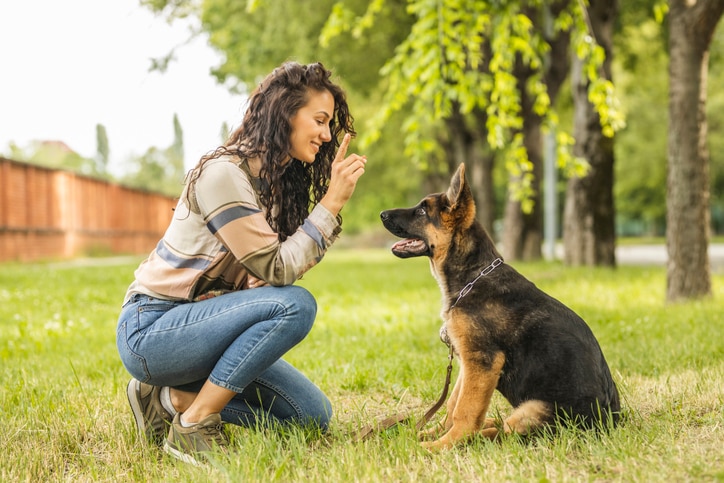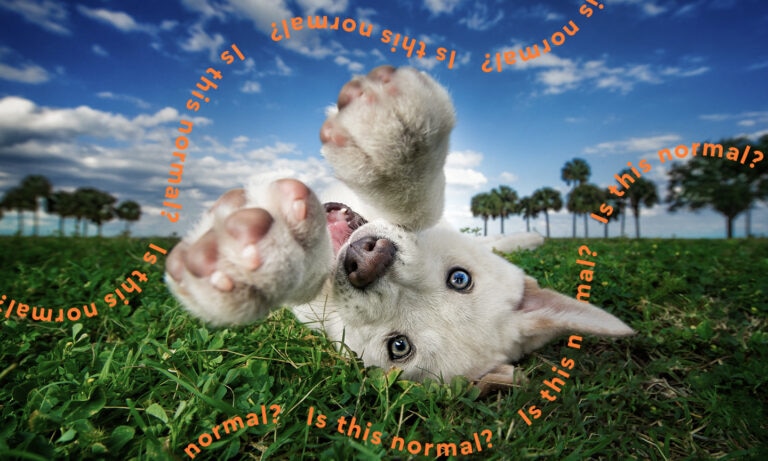Walking With Dogs: Health Benefits and Pro Tips for the Best Walk Ever

Photo by Chewy
Walking your dog might seem like something you do on autopilot—something that simply comes with the territory. But when you take a moment to consider the amazing emotional, physical and mental health benefits of walking your dog, you’ll quickly realize just how important it is to prioritize walking with dogs for their overall wellbeing.
So, how can you create a good dog walking routine—especially one that works around your other responsibilities? How long of a walk is ideal? What if your pup is reactive on leash? There are a lot of factors to consider.
Here, a vet and a certified dog trainer share how to help both you and your dog have a safe and enjoyable experience every time you head outside.
5 Health Benefits of Walking Your Dog
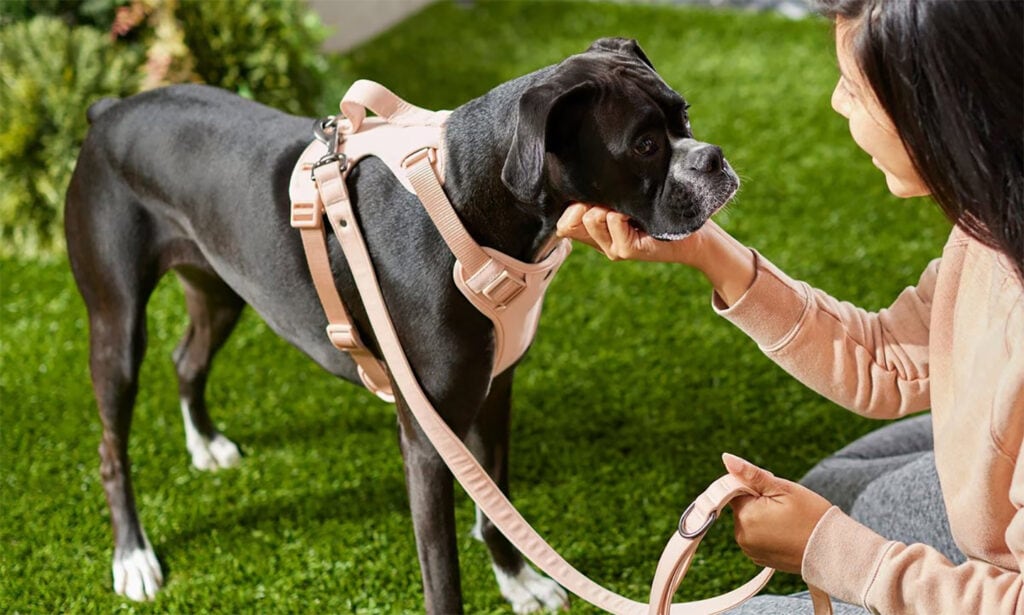
Chewy Studios
There are so many impressive benefits of walking your dog that go way beyond regular bathroom breaks. They include:
1. Mental Stimulation
Most dogs spend much of their time in the same environment: your apartment or house and a yard, if they have access to one. That means they can quickly grow accustomed to the same sights and smells, explains Irith Bloom, a certified professional dog trainer at The Sophisticated Dog based in the Los Angeles area.
For your dog, a walk is a great opportunity for new, fun experiences, says Bloom. It may surprise you, but “the primary exercise you want your dog to be getting on a walk is mental exercise, not physical exercise,” she says.
Being exposed to new things on dog walks helps them build confidence and optimism, she adds. “[A walk] gives them the mental enrichment they need to feel both psychologically and emotionally better,” says Bloom, “because they’re not sitting around bored and understimulated, which can be really hard [as] they’re intelligent animals.”
2. Weight Management
“Just like us, dogs benefit from regular exercise,” says Dr. Kate Farmer, DVM, a veterinarian at the Animal Humane Society in Minnesota. This includes controlling obesity and excess weight gain, which can be an issue for some animals.
Whether your pup is carrying some extra pounds because of a sedentary lifestyle; a mobility issue caused by an injury or pain; or a few too many high-caloric treats, walks are a low-impact way to increase activity level.
3. Joint Health and Mobility
Regular walks “can be especially good for arthritic dogs to get joints moving,” says Dr. Farmer. “Arthritis tends to get worse with sedentary behavior. So getting your older, arthritic dog out for a nice, slow walk can be really beneficial for their joints.”
While moving can help keep joints lubricated and healthy in some older dogs, you actually want to take it easy when it comes to how much you’re walking a puppy or younger dog, says Bloom.
That’s because a puppy’s bones are still growing, and overexerting them during these important early months can cause long-term damage. (This is also why it’s not the best idea to go running with your puppy—as energetic as they might seem.)
4. Bonding Experiences
Walking your dog can be a bonding experience, especially if you can give them some control over the experience and show them they have your attention, says Bloom.
“If you show your dog that you’re a really great walking partner, they’re going to partner up on the walk with you, too,” she says. Try letting your dog choose the route, instead of mindlessly walking the same loop you always do after work, for example.
Giving your dog some perceived choices can encourage positive associations and optimistic outlooks about walking for your dog, says Bloom.
5. Overall Better Health
Staying active—walks included—is great for your pet’s mental and physical health, disease prevention and good cardiovascular health, says Dr. Farmer. “Just like us, stress has chronic effects [on dogs],” she says. “Dogs that are happy [and] stimulated just have overall better health.”
However, physical activity can’t take the place of mental stimulation, says Bloom. “There’s this misconception that if you have a really energetic dog, [that] what you want to do is work all of that energy out of them by [exercising] them really hard,” Dr. Farmer says. “What actually happens if you don’t give them time to get the mental enrichment and have that emotional satisfaction of interacting with the world, is you get a really fit dog who still has a lot of nervous energy.”
Balance mentally stimulating walks—with lots of time to sniff and explore—with walks that are more focused on potty breaks or physical activity, she says.
6 Pro Tips for the Best Walk Ever
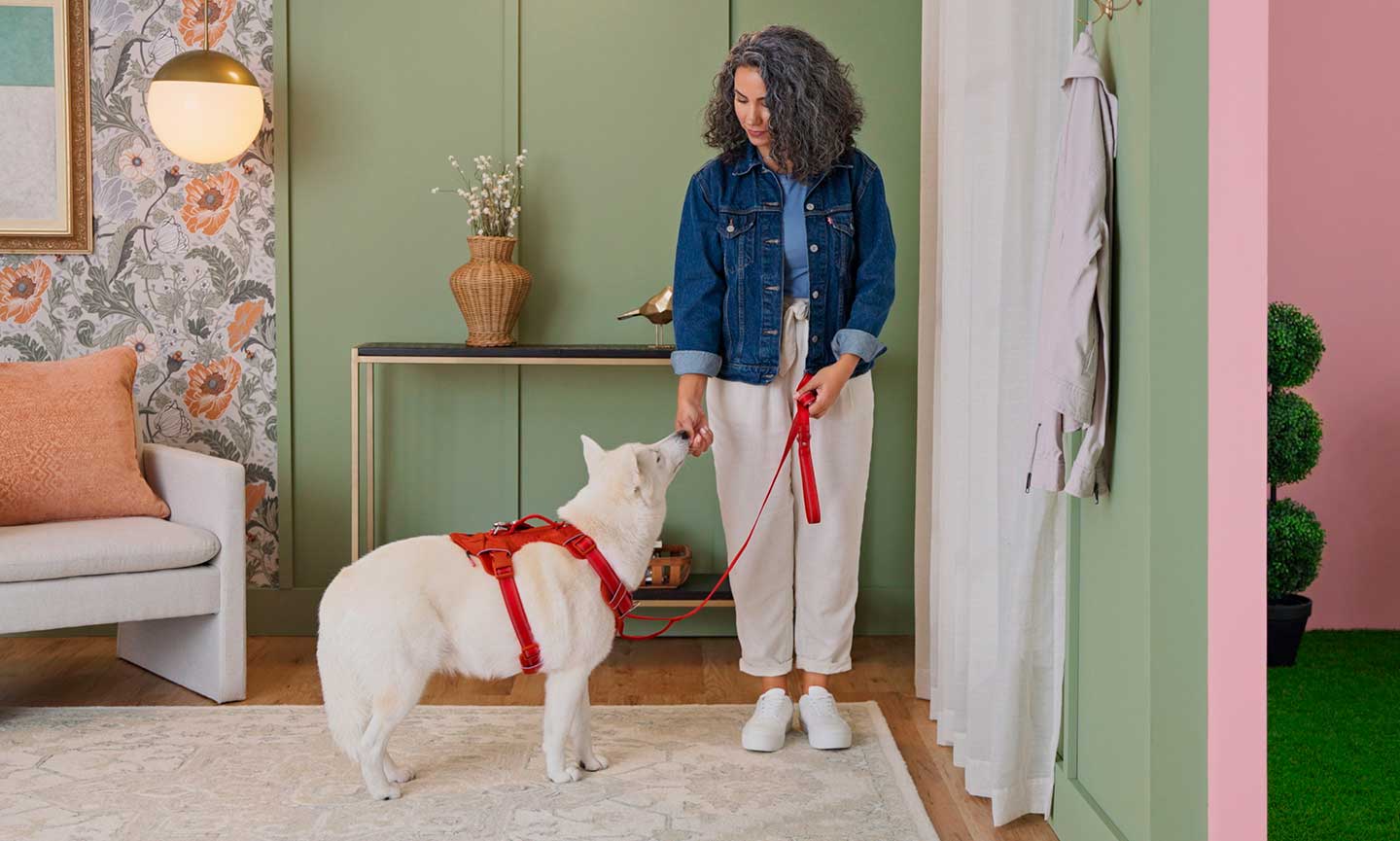
Chewy Studios
While the goal of every walk with dogs might be different—bathroom break versus sniffing exploration versus physical exertion—you want every walk to be a safe, enjoyable experience for your pooch. With that in mind, the pros have a few more tips.
1. Stay present.
“My No. 1 tip for people walking their dogs is put your phone on flight mode and keep it in your pocket, so you and your dog can experience the world together,” says Bloom.
Not only does putting the tech away keep you attune to your pup’s vibe, but it also helps keep you both safe and aware. Leave your headphones at home, too—the playlist or podcast can wait.
2. Take cues from your dog.
Take notice of your dog’s body language and how they interact with the environment during walks, Bloom says.
For example, dogs who engage more with their nose than with their eyes on a walk, Bloom says, are likely feeling chilled out. A relaxed posture; a lifted, maybe slightly wagging tail; and an attentive but not hyper-alert demeanor are all indications your dog is calm and enjoying your walk.
Conversely, if your dog walks with their head on a swivel, such that they are constantly looking behind them or around them, they’re probably not very comfortable, she says.
Consider working with a trainer if your dog is struggling to relax on leash, and don’t feel like you have to force long walks on your dog, says Bloom. You might assume your dog needs a walk when they really don’t. If they’re unhappy, the walk isn’t doing them any good, she says.
3. Set a reactive dog up for success.
If your dog tends to be reactive—to other dogs, people, or bikes or squirrels, for example—try walking during off-peak hours when there are fewer potential triggers, says Dr. Farmer. Working with a trainer can help manage some of this reactivity, but there’s nothing wrong with choosing a time and place that is safer and better for your dog’s temperament, she explains.
If that’s not an option for your schedule—or you happen to find yourself in a triggering situation with your dog—keep as much distance from whatever they are reacting to as possible, says Bloom. Cross the street if you see another dog approaching, or step onto someone’s driveway if you see a cyclist.
It’s impossible to avoid all triggers, so redirecting their attention to you and a high-reward treat can also help, says Bloom. Finally, “don’t get angry with your dog—because all that does is associate more fear with whatever they just saw,” and that’s going to make them react even earlier next time, she says.
4. Reinforce good behavior on walks.
Every walk is a training opportunity, so it’s a smart idea to carry dog training treats with you, says Bloom. Regardless of whether you’re working with a new puppy or a dog who’s been in your family for years, walks are a chance to remind them they will be rewarded when they walk next to you, wait at a crosswalk or go potty outside, she says.
Recommended Products
5. Don’t stress over how far you go.
“Walk for time, not distance,” suggests Bloom. “It’s really about time out in the environment.” So, if you carve out 30 minutes for a walk and your dog wants to spend 20 of those minutes sniffing one area of the park, let them.
What’s more, some dogs might thrive by walking the same route again and again because they feel safe in a predictable environment, while others may love to explore new areas of town, says Bloom.
Again, take note of your dog’s needs and background when determining how long and how far you’re adventuring.
6. Keep safety in mind.
Bloom recommends a harness for most pups as it doesn’t cause damage to the tissue in their necks, particularly if your dog pulls.
If you use a collar, opt for a martingale style as this will help prevent your pup from accidentally slipping out of their collar. That said, a well-fitted collar and harness are critical to prevent skittish dogs from getting loose, and “the dog will be more comfortable in the equipment when it’s fitted properly,” she says.
Always have an ID on your dog when you’re walking them—a visible ID tag as well as a microchip, she adds. Finally, if your dog has been known to slip out of their harness or collar on walks, Bloom says, clip a Y-style leash onto their collar and/or harness in two places for double security.
Recommended Products
When it comes to walking with dogs, there’s no one-size-fits-all advice for every pup or pet parent. Create a routine that works for both of you and takes your schedule—as well as your dog’s natural instincts for physical activity and mental stimulation—into consideration. Keep a few key things on hand (you don’t want to be caught without a poop bag!), avoid triggers when possible, and above all else, let them sniff!


